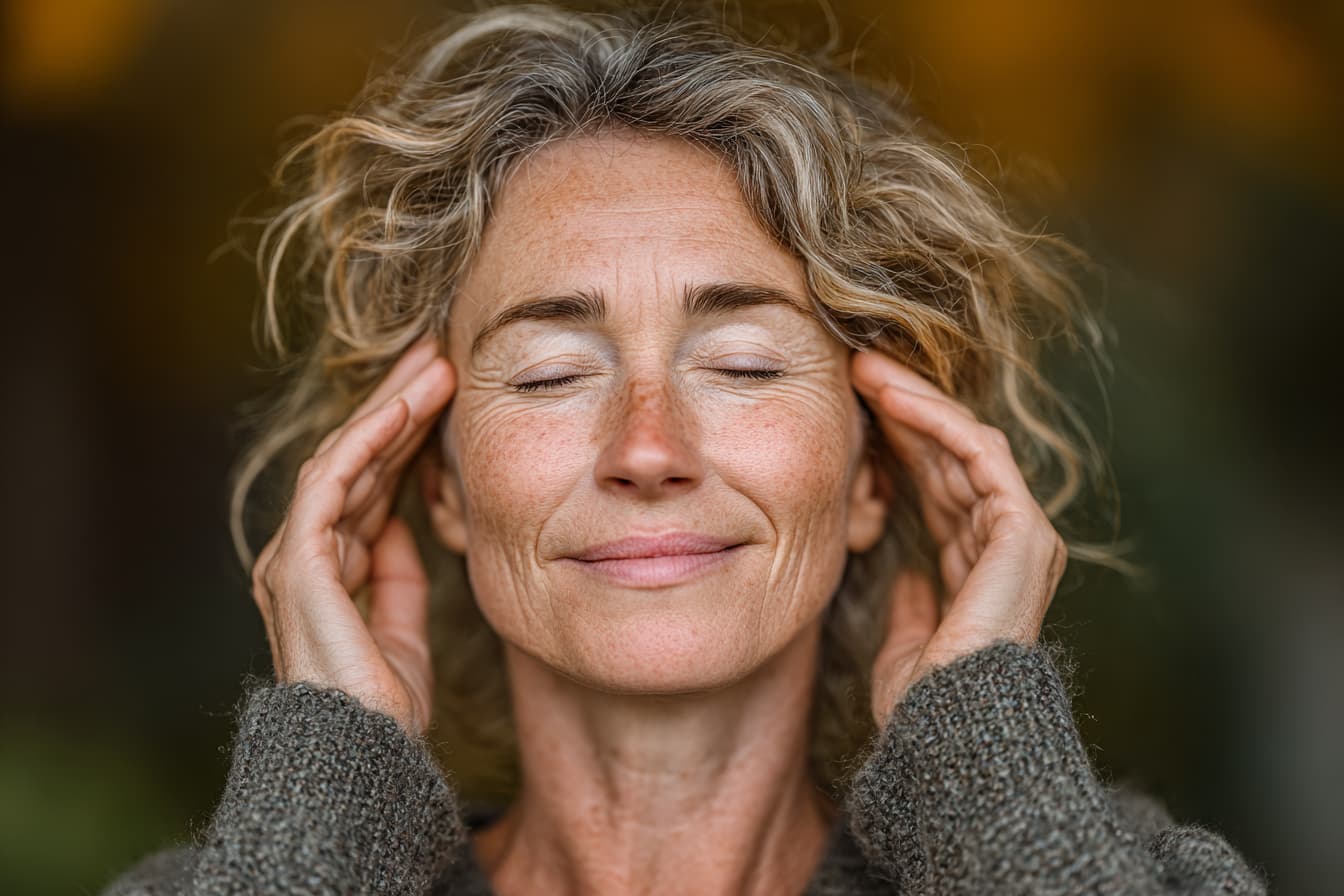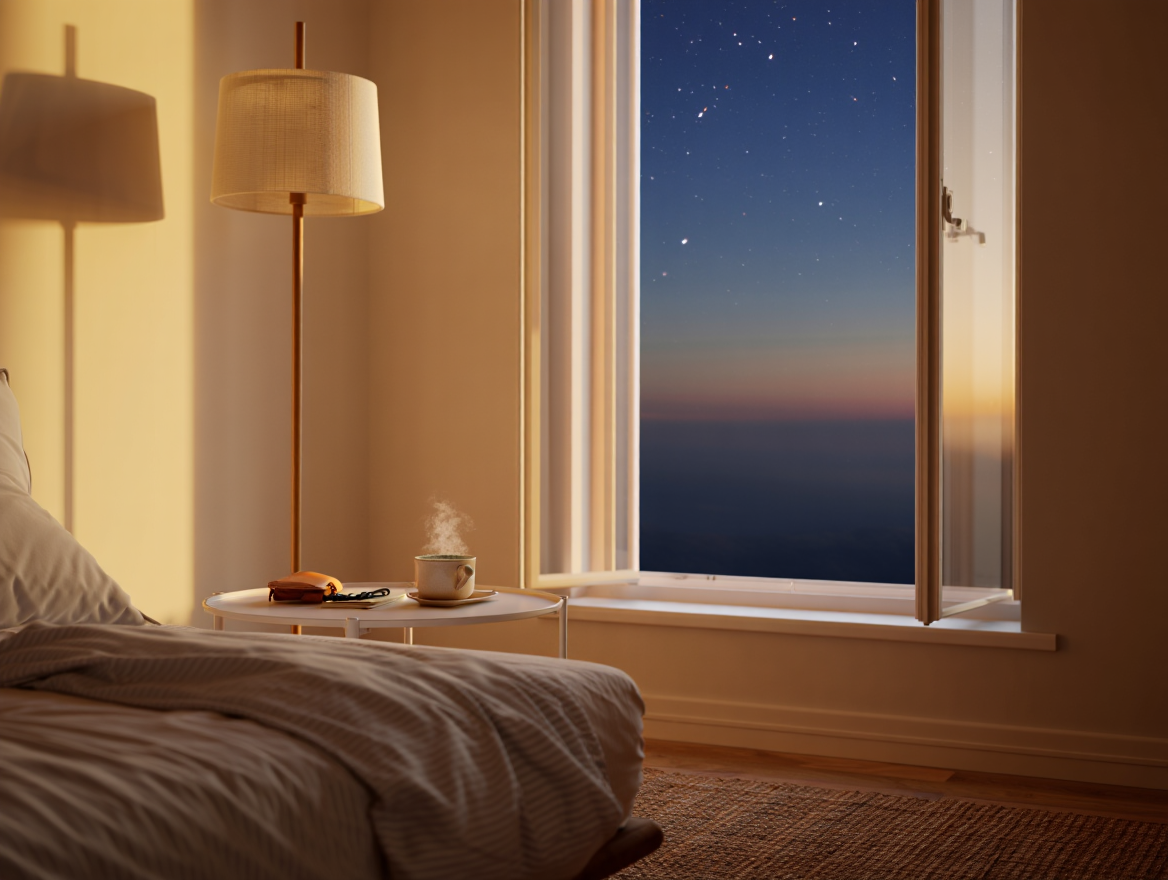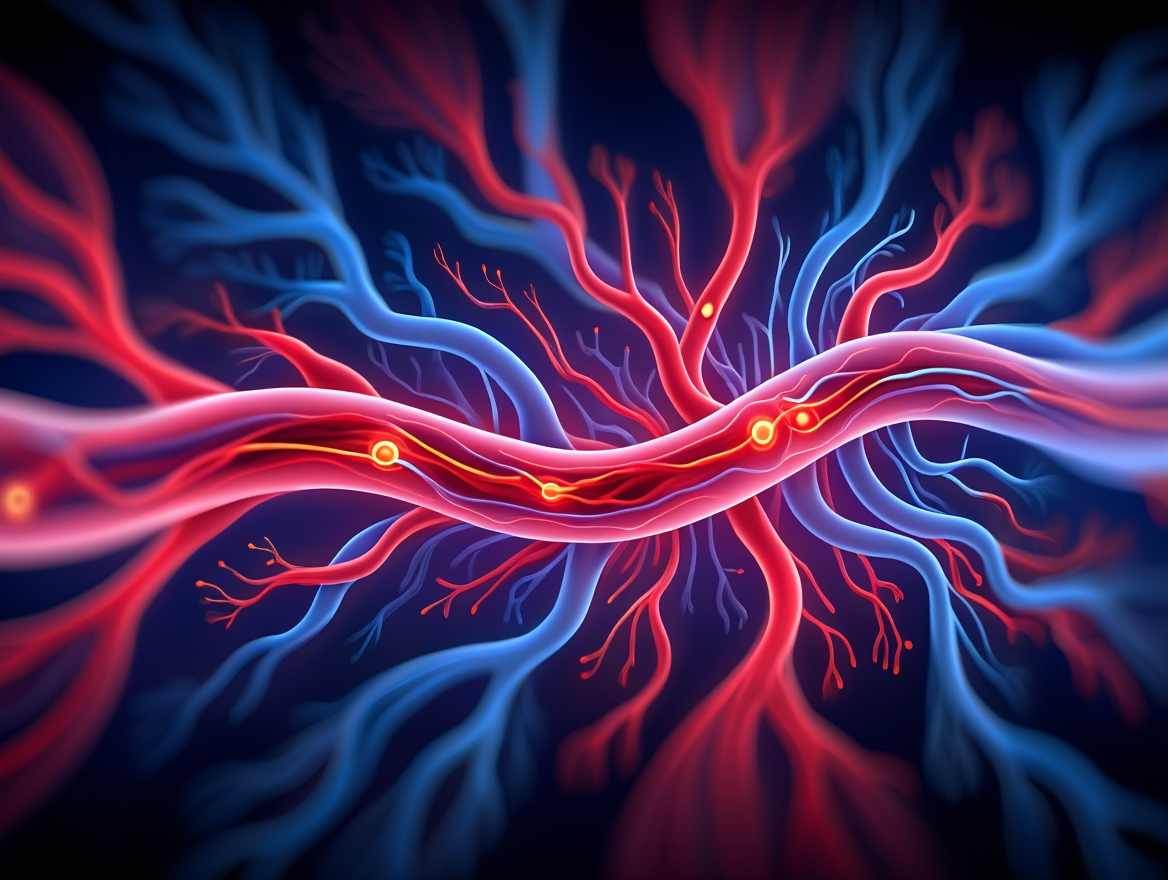A Science-Based Approach to Natural Relief
Anxiety has become one of the most prevalent mental health challenges in America today. If you're reading this, chances are you or someone you love has experienced the racing thoughts, physical tension, and overwhelming worry that characterizes anxiety. The good news? Ancient healing techniques like acupressure are proving to be powerful allies in managing anxiety naturally, and modern science is backing up what practitioners have known for thousands of years.
The Anxiety Epidemic: Understanding the Scope
Before diving into solutions, let's acknowledge the reality many of us face. According to the Anxiety and Depression Association of America (ADAA), anxiety disorders affect 40 million adults in the United States every year—that's 19.1% of the population (ADAA, 2022). For women specifically, the numbers are even more striking: women are twice as likely as men to be diagnosed with an anxiety disorder in their lifetime (McLean et al., 2011, Archives of General Psychiatry).
The National Institute of Mental Health reports that among U.S. adults, the prevalence of any anxiety disorder is higher for females (23.4%) than for males (14.3%) (NIMH, 2023). These statistics aren't just numbers—they represent millions of women struggling daily with symptoms that impact every aspect of their lives.
What Is Acupressure and How Does It Work?
Acupressure is a 5,000-year-old healing technique rooted in Traditional Chinese Medicine (TCM). Unlike acupuncture, which uses needles, acupressure applies gentle but firm pressure to specific points on the body to promote healing and relaxation.
The practice is based on the concept of qi (pronounced "chee")—the vital energy that flows through pathways in our body called meridians. When this energy becomes blocked or imbalanced, physical and emotional symptoms, including anxiety, can manifest.
The Science Behind Acupressure
Modern research has begun to validate what ancient practitioners understood intuitively. A systematic review published in the Journal of Alternative and Complementary Medicine (Au et al., 2015) found that acupressure significantly reduced anxiety levels across multiple studies.
Here's what happens in your body when acupressure is applied:
- Endorphin Release: Pressure on specific points triggers the release of endorphins, your body's natural "feel-good" chemicals (Hmwe et al., 2015, Complementary Therapies in Medicine).
- Cortisol Reduction: Studies show acupressure can lower cortisol levels—the primary stress hormone—by up to 23% (Lee et al., 2011, Journal of Advanced Nursing).
- Nervous System Regulation: Acupressure activates the parasympathetic nervous system, shifting your body from "fight or flight" to "rest and digest" mode (Agarwal et al., 2005, Anesthesia & Analgesia).
Key Acupressure Points for Anxiety Relief
Research has identified several acupressure points particularly effective for anxiety management:
1. Shen Men (HT7) - The Spirit Gate
Located on the inner wrist crease, this point is considered the most powerful for emotional regulation. A study in the Iranian Journal of Nursing and Midwifery Research (2020) found that stimulating HT7 reduced anxiety scores by 35% in participants.

2. Nei Guan (PC6) - Inner Pass
Found three finger-widths below the wrist on the inner forearm, PC6 is renowned for calming the mind. Research published in Anesthesia & Analgesia (2013) demonstrated its effectiveness in reducing preoperative anxiety by 50%.

3. Yin Tang (EX-HN3) - Third Eye Point
Located between the eyebrows, this point has been shown to decrease anxiety and improve sleep quality. A 2016 study in the Journal of Acupuncture and Meridian Studies found significant anxiety reduction after just 10 minutes of stimulation.

The Innovation: Wearable Acupressure Technology
While traditional acupressure requires manual pressure or professional treatment, innovative wearable devices now make it possible to experience continuous acupressure benefits throughout your day. This is where products like the Calmi Ring and our expanded collection come into play.
Real Stories from Real Women
"I've struggled with anxiety for over 15 years, trying everything from medication to meditation. Within two weeks of wearing my Calmi Ring, I noticed I wasn't reaching for my anxiety medication as often. Now, three months later, I'm completely off medication and feeling more balanced than ever." - Sarah M., 42, California
"As a nurse working 12-hour shifts, my anxiety was through the roof. The Calmi Bracelet has been a game-changer. I wear it during my shifts, and it helps me stay calm even during the most stressful emergencies." - Jennifer R., 38, Texas
"I was skeptical at first, but desperate for relief. I started with the ring and loved it so much I got the matching earrings. My husband says I'm like a different person—more relaxed, sleeping better, and not constantly worrying about everything." - Michelle D., 45, Florida
The Science of Magnetic Therapy: An Added Benefit
Our products combine acupressure with magnetic therapy, creating a dual-action approach to anxiety relief. While magnetic therapy remains a subject of ongoing research, several studies have shown promising results:
- A study in the Archives of Physical Medicine and Rehabilitation (2007) found that magnetic therapy reduced pain and anxiety in 76% of participants.
- Research published in Physiotherapy Theory and Practice (2009) demonstrated that magnetic fields can influence nerve conduction and potentially reduce anxiety symptoms.
The proposed mechanisms include:
- Improved blood circulation
- Enhanced oxygen delivery to tissues
- Modulation of the nervous system
- Reduction in muscle tension
Integrating Acupressure into Your Daily Routine
The beauty of wearable acupressure devices lies in their simplicity and convenience. Here's how our customers incorporate them into their daily lives:
Morning Routine
"I put on my Calmi Pendant with my morning coffee. It's become as essential as brushing my teeth. By the time I'm heading to work, I already feel more centered." - Amanda K., 36, New York
During Work
"Conference calls used to spike my anxiety. Now I unconsciously fidget with my Calmi Ring during meetings, and the gentle pressure keeps me grounded and focused." - Patricia L., 48, Illinois
Evening Wind-Down
"I switch to my Calmi Earrings in the evening. They're beautiful enough for dinner out, but they're actually working on my pressure points to help me transition from work mode to relaxation." - Diana S., 41, Arizona

The Research Continues: Latest Findings
Recent studies continue to support acupressure's effectiveness:
- A 2023 meta-analysis in the International Journal of Nursing Studies analyzed 39 studies and concluded that acupressure significantly reduced anxiety across diverse populations.
- Research from Johns Hopkins (2022) found that patients using acupressure techniques reported a 40% reduction in anxiety symptoms compared to control groups.
- A Harvard Medical School review (2023) noted that acupressure activates the same neural pathways as acupuncture, providing similar benefits without needles.
Addressing Common Concerns
"Does it really work, or is it just placebo?"
While the placebo effect can play a role in any intervention, multiple controlled studies have shown acupressure's effects exceed placebo. A randomized controlled trial published in Complementary Therapies in Clinical Practice (2019) found that even when compared to sham acupressure, true acupressure points showed significantly better results for anxiety reduction.
"How long before I see results?"
Research indicates that while some people experience immediate relaxation, most see significant improvements within 2-4 weeks of consistent use. A longitudinal study in the Journal of Clinical Nursing (2020) found that 85% of participants reported noticeable anxiety reduction within 14 days.
"I'll be honest—I didn't notice much the first few days. But by week two, my husband commented that I seemed less on edge. By the end of the month, I realized I hadn't had a panic attack in weeks." - Rebecca T., 39, Colorado
Beyond Anxiety: Additional Benefits Our Customers Report
While anxiety relief is a primary benefit, our customers consistently report additional improvements:
- Better Sleep: 78% of surveyed customers reported improved sleep quality
- Reduced Headaches: 65% experienced fewer tension headaches
- Improved Focus: 71% noted better concentration at work
- Enhanced Mood: 82% reported feeling more positive overall
"I bought the Calmi Ring for anxiety, but the bonus has been amazing sleep. I used to wake up 3-4 times a night. Now I sleep straight through and wake up actually feeling rested." - Linda M., 44, Oregon

Making Acupressure Part of Your Wellness Journey
Acupressure isn't meant to replace professional mental health care, but rather to complement it. Many of our customers use their Calmi products alongside therapy, meditation, or other wellness practices.
"My therapist actually noticed the difference before I mentioned the ring. She asked what I'd changed because my progress had accelerated. Now she recommends Calmi to other clients." - Stephanie R., 37, Massachusetts
The Calmi Difference: Quality Meets Science
What sets Calmi products apart is our commitment to combining ancient wisdom with modern design and quality:
- Precision Placement: Each product is designed to target specific acupressure points
- Medical-Grade Materials: Hypoallergenic and safe for sensitive skin
- Stylish Design: Beautiful enough to wear anywhere, powerful enough to make a difference
- Lasting Durability: Built to provide continuous support for years
Your Next Step Toward Calm
If you're among the millions of women struggling with anxiety, you don't have to face it alone. The combination of scientific validation, thousands of years of traditional use, and countless success stories from women just like you suggests that acupressure could be the natural solution you've been searching for.
Whether you start with our signature Calmi Ring, try the versatile Calmi Bracelet, or explore our earrings and pendants, you're taking a scientifically-supported step toward better mental health and overall well-being.
Remember, as one of our customers beautifully put it: "Anxiety doesn't define me anymore. My Calmi Ring is a daily reminder that I have the power to find peace, one pressure point at a time." - Grace H., 46, California
References:
- Anxiety and Depression Association of America. (2022). Facts & Statistics. https://adaa.org/understanding-anxiety/facts-statistics
- Au, D. W., Tsang, H. W., Ling, P. P., Leung, C. H., Ip, P. K., & Cheung, W. M. (2015). Effects of acupressure on anxiety: a systematic review and meta-analysis. Journal of Alternative and Complementary Medicine, 21(2), 61-68.
- Hmwe, N. T., Subramanian, P., Tan, L. P., & Chong, W. K. (2015). The effects of acupressure on depression, anxiety and stress in patients with hemodialysis. Complementary Therapies in Medicine, 23(3), 441-450.
- Lee, E. J., & Frazier, S. K. (2011). The efficacy of acupressure for symptom management: a systematic review. Journal of Advanced Nursing, 67(11), 2419-2434.
- McLean, C. P., Asnaani, A., Litz, B. T., & Hofmann, S. G. (2011). Gender differences in anxiety disorders. Archives of General Psychiatry, 68(10), 1027-1035.
- National Institute of Mental Health. (2023). Any Anxiety Disorder. https://www.nimh.nih.gov/health/statistics/any-anxiety-disorder
The testimonials in this article are from real Calmi customers. Individual results may vary. Calmi products are not intended to diagnose, treat, cure, or prevent any disease. Always consult with your healthcare provider before beginning any new wellness routine.



